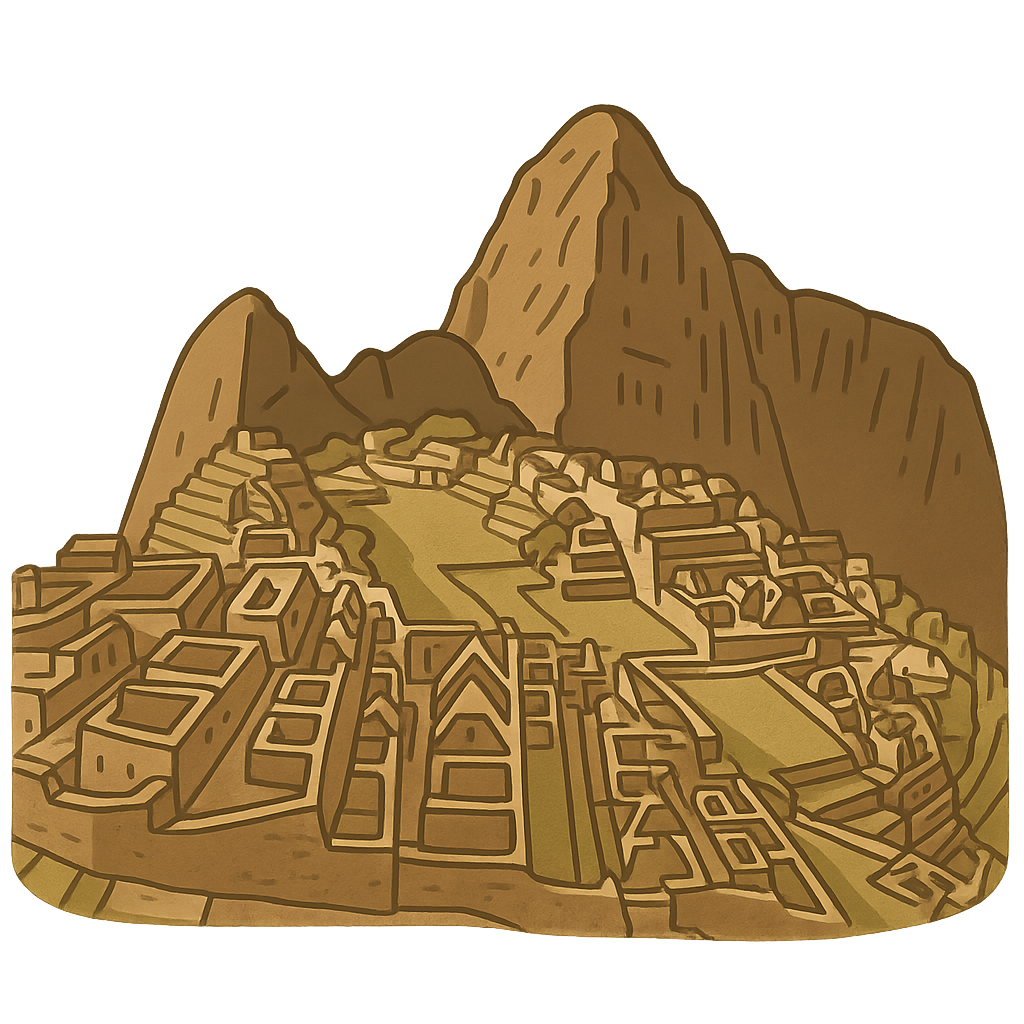The City in the Clouds
High in the Andes mountains of Peru, I lie draped in mist like a secret whispered among the clouds. For centuries, I have watched the sun rise over jagged peaks, its first golden rays warming my granite walls. The wind is my constant companion, whistling through my empty plazas and stone doorways, carrying tales of ancient times. I am a city carved from a mountaintop, my green farming terraces stepping down the slopes like a giant staircase leading to the heavens. From above, I look like a majestic crown of stone, a hidden kingdom where condors soar on silent wings. People have called me a castle in the sky, a sanctuary built by gods. I am a wonder of engineering and spirit, a place that was built to touch the sun and then was lost in a long, quiet sleep. I am Machu Picchu.
I was born from the vision of a great ruler, the Sapa Inca Pachacuti, around the year 1450. My creators were the Inca people, the Children of the Sun, who were masters of building and astronomy. They chose this breathtaking mountain ridge for a reason, envisioning me as a sacred place to honor their gods and a peaceful royal estate, far from the bustling capital of Cusco. The world back then was one of powerful empires, and the Inca were one of the greatest. Their engineers and stonemasons performed miracles with the mountain itself. They cut and polished massive granite blocks, some weighing over 50 tons, with such incredible precision that they fit together perfectly without a single drop of mortar. It is a technique called ashlar, and my walls are a testament to their genius, a giant 3D puzzle that has withstood earthquakes and the passing of more than 500 years. They built me to be a complete city. My Temple of the Sun is a curved tower with windows perfectly aligned to track the solstices. My Intihuatana stone was a sacred clock, marking the movement of the sun. And my intricate system of stone channels, built on a gentle slope, brought fresh spring water to every corner of my city, a marvel of hydraulic engineering.
My life as a bustling estate, however, was vibrant but brief. For nearly a century, from about 1450 to 1572, I was home to Inca royalty, priests, and the families who served them. Life here was filled with ceremony, farming, and a deep connection to the mountains and the sky. But the world outside my protected perch was changing. The Inca Empire faced enormous challenges, including the arrival of Spanish conquistadors in 1532, which brought war and disease that devastated the population. As the empire crumbled, my residents slowly departed, leaving me to my silent watch. I was never attacked or destroyed; I was simply left behind. The jungle, patient and persistent, began to reclaim me. Green vines crept over my perfectly fitted stones, and thick vegetation hid my pathways and plazas. To the outside world, I became a legend, a 'lost city' hidden in the clouds. But I was never truly lost. The local Quechua families, descendants of the Inca, always knew I was here. They lived in the valleys below and sometimes climbed my slopes to farm on my terraces, their presence a quiet thread connecting my past to the future.
My long, quiet sleep ended in the year 1911. A new kind of explorer had come to Peru, an American historian from Yale University named Hiram Bingham. He was fascinated by the legends of the Inca and was searching the Andes for their lost cities. He heard whispers from locals about ancient ruins high up in the mountains. On July 24, 1911, a local farmer named Melchor Arteaga agreed to guide him up my steep, treacherous slopes. The journey was difficult, a climb through thick forest and along narrow ledges. When they finally reached the top, Bingham could not believe his eyes. Peeking out from beneath a blanket of jungle were the most incredible stone buildings he had ever seen. He saw my temples, my houses, and my grand plazas, all remarkably preserved. It was a moment of pure wonder, a bridge suddenly built across centuries of silence. His expedition brought my story to the attention of the entire world, and a new chapter of my life began, one where I would wake up and share my secrets with everyone.
Today, my stone streets are once again filled with the sounds of people, but now they are visitors from every corner of the globe. I am a UNESCO World Heritage site, a treasure that belongs to all of humanity. People walk through my gates and stand in awe, trying to imagine the brilliant civilization that built me in such a spectacular place. I am more than just a ruin; I am a powerful reminder of what people can achieve when they work in harmony with nature. My existence inspires architects, engineers, artists, and dreamers. My stones whisper stories of resilience, creativity, and a deep spiritual connection to the earth. I stand as a promise that even if things are lost, they can be found again, and that the greatest creations can endure to teach and inspire new generations for centuries to come.
Reading Comprehension Questions
Click to see answer
